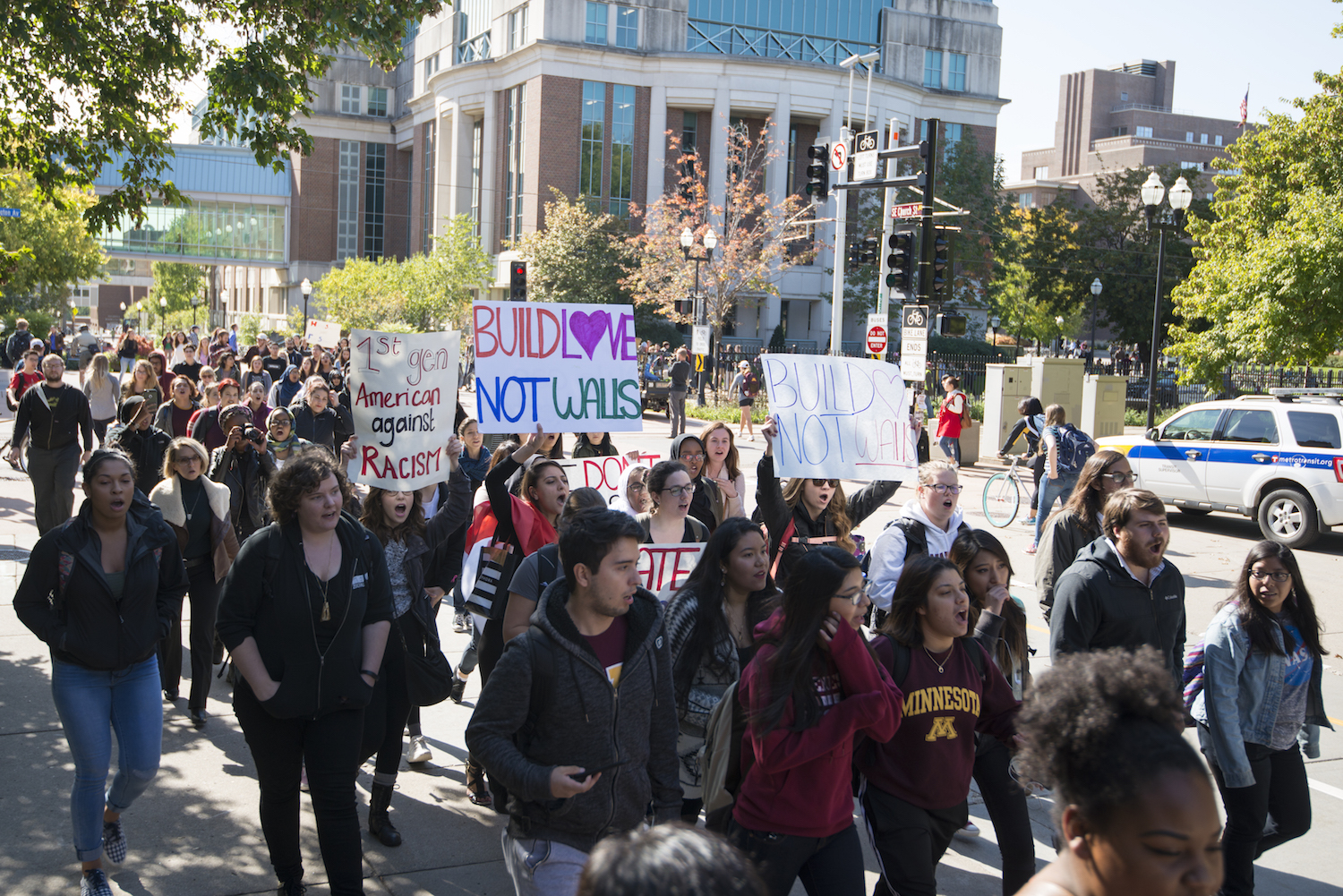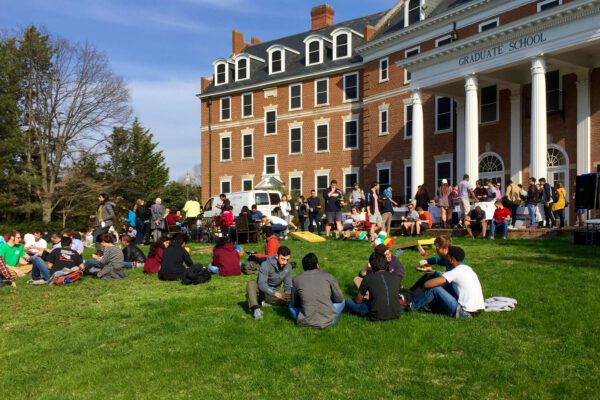Amelia Parnell of NASPA – Student Affairs Administrators in Higher Education looks at the role student affairs professionals can play in advocating for diversity on their campus.
This is the latest post in a series sparked by recent student protests and the national dialogue on diversity and inclusion.
As we all have watched in recent months, tensions around racial diversity in the United States are unfolding on college campuses, as students are staging protests and issuing demands for change. The challenge of affirming racial diversity is complex because it exposes America’s slow progress in reconciling a history of racial disparity. The strain of an unbalanced racial climate is affecting all members of the higher education enterprise and, consequently, faculty, administrators, staff, and students need campus environments that more deliberately address our country’s changing racial demographics.
As senior administrators, researchers, and association leaders discuss the issue of race on college campuses, an important question is emerging: Are institutions of higher education the correct entities to task with addressing racial issues in the United States? The question, while mostly rhetorical, has an underlying truth, which is that racial diversity is not a problem to be solved but instead a complex goal that must be pursued with careful, considerate, and systematic approaches.
William E. Kirwan, chancellor emeritus of the University System of Maryland suggests that institutional goals for diversity and inclusion should be shared with all members of the campus community and that progress toward those goals is a measure of success. However, as institutional leaders are compelled to employ strategies for affirming racial diversity, they might find it difficult to frame the issues. What are the appropriate terms? Is the tension we are witnessing and experiencing related to social justice? Is it better framed as discrimination? Is it a problem related to bias? Is it a matter of inclusion? Is it all of the above?
Because these issues are woven together, leaders must delicately address the resulting problems in a way that utilizes experienced personnel. Research suggests that student affairs professionals are such a group. In fact, a recent survey by ACE found that a majority of college presidents rely on their student affairs professionals to address racial climate issues. Such roles have often resulted in student affairs professionals serving as a type of first respondent to campus developments.
In this post, I highlight how student affairs professionals can go beyond the role of first respondent to one of a change agent by visibly advocating for racial diversity within their campus and contributing to a community-based approach that expands related dialogue to larger external networks.
Change Agency Through Advocacy
Out-of-classroom environments are ripe with opportunities for students to process, communicate, and engage around the topic of racial diversity and, as a result, student affairs professionals are often expected to support students in those settings.
It is imperative that we listen to what students are saying with their activism and public demands. To do this, student affairs must often enter existing conversations students are having both on and off campus. Students are continually and simultaneously connected to networks far larger than just those on their campus, as they share their ideas and views via social media and personal communication with multiple groups. Student affairs can most affect change by entering these existing discussions as an advocate committed to helping build synergy between students’ campuses and external networks, and it appears that such involvement would be well received.
According to a recent analysis of college students’ demands, a reported 89 percent of student groups and organizations have made demands for leadership, including asking campus executive leaders to serve as a diversity advocate in the community and on campus.
For example, student affairs professionals in Loyola University Chicago’s Department of Student Diversity and Multicultural Affairs are visible advocates for affirming racial diversity. The department operates a leadership program that prepares students to engage in critical dialogue with peers, staff, and faculty in co-curricular and classroom settings. Part of the work involves training on how to engage in difficult conversations in spaces where one’s individual identities may not be affirmed. The department is clearly contributing to the institution’s progress, as it delivers a suite of recurring programs and signature events for students, faculty, and staff to promote an inclusive environment for everyone.
Emory University’s (GA) Campus Life community is also visibly committed to affirming racial diversity and is leading efforts to address race in higher education. Emory’s Student Affairs Institute recently hosted an inaugural summit for student affairs leaders, senior university leaders, deans, and department heads to address challenging issues around cultural and racial identity. The Institute and summit clearly connect to the university’s mission, which includes a commitment to respectful interactions among faculty, students, and staff, which is essential to affirming racial diversity.
That same analysis of student demands on ACE’s Higher Education Today blog also reported that over 85 percent of student groups and organizations want a more diverse campus community, which includes increases in the numbers of minority members of the faculty and administration. Perhaps one benefit of a more racially diverse cadre of administrators is that students, particularly students of color, will feel more comfortable entering and navigating their campuses, especially in situations where race issues are highlighted. Self-reported data from NASPA – Student Affairs Administrators in Higher Education suggests that student affairs professionals are reflective of students’ calls for diversity, as over half of the organization’s member base is composed of professionals of color. The table below suggests that the student affairs profession at large is racially diverse.

Change Agency Through Wider Networks
A second challenge is that some student affairs professionals, particularly those of color, may be working to affirm diversity for racial groups with which they personally identify. As a result, one concern for their role as change agents is that a long-term commitment to this complex work, combined with slow, incremental progress, may lead to fatigue. If student affairs professionals are to be effective as change agents, they need to connect with others who are affirming racial diversity in settings external to their individual campuses. This requires a connection to networks that cross all institutional types, including Historically Black Colleges and Universities, Hispanic-Serving Institutions, and religious institutions, all of which are often not discussed as places that need affirmations of racial diversity.
Online forums such as The Student Affairs Collective are one avenue for professionals to extend their networks. This online community hosts a weekly Twitter series, #SAChat, to provide a space to discuss current higher education issues. It appears that student affairs professionals’ concerns related to affirming racial diversity resemble those of the students they support, as 11 discussions in 2015 were connected to these topics:
- Access to Higher Education
- Baltimore and Race Relations in the US
- Discussing Mizzou
- Discussing the #AMEshooting
- Hiring Diversely vs. Tokenism
- On-Campus Advocacy: Speaking Up without Putting Your Job at Risk
- Racism in Campus Clubs/Orgs (Isolated or Systemic)
- #SAPro Civility and Social Media
- Serving Non-Traditional Students
- Student Activism
- Supporting International Students through Crises at Home
Student affairs professionals are ready to engage in difficult conversations—the two one-hour chat periods on the topic On-Campus Advocacy: Speaking Up without Putting Your Job at Risk, for example, resulted in a total of 558 tweets from 151 contributors. As online communities continue to expand and student affairs professionals become increasingly engaged in regional and national in-person networks, these conversations will surely progress into more concerted efforts to share best practices and form alliances for change.
In Closing
While the framing of racial issues is at times difficult, and the work is arguably too large for higher education professionals to tackle alone, we know that efforts to affirm racial diversity are critical to providing comfortable, inclusive environments for all students. As our country becomes more racially diverse, student affairs professionals can help affirm that diversity by connecting and facilitating the conversations, activities, and networks that are necessary to embracing and building the welcoming campuses that we desperately need.
If you have any questions or comments about this blog post, please contact us.


